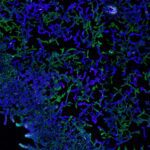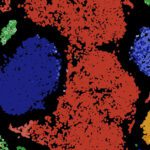In this series, we’re sharing practices of community-engaged research (CER): researchers and community partners working together to advance community goals and science.
Authorship practices for community-engaged research
Authorship of scientific papers is more than a list of names. It’s an on-going topic of discourse. It’s a subject for bibliometric analysis. And, it has its own go-to set of criteria.
The International Committee of Medical Journal Editors (ICMJE) recommends that authors make “substantial contributions” to the research, write up or revise the paper, approve of the version of the paper to be submitted to a journal, and are accountable for the published paper, should any queries arise.
Such standardized criteria for authorship are not always applicable to contributions to community-engaged research (CER) or worldviews of community partners.
In this post, we highlight several inclusive authorship practices to support learning and conversations about recognizing the diverse contributions of CER.
Talk about authorship early, often, and in person
Conversations between researchers and community partners are encouraged for all stages of a project, including deciding on co-authorship: who will (and will not) be listed as an author on the scientific papers arising from the research.
When does this communication happen? Early.
“Early, because it’s good to consider what contributions merit recognition as an author, and to create opportunities for those involved to make those contributions, rather than deciding after the fact that someone didn’t do enough when they may not have known what was at stake,” explains Arctic researcher Dr. Henry Huntington, 16 years after his initial reflection on Who Are the “Authors” When Traditional Knowledge is Documented?
How does the communication happen? Often.
“Often because those outside [of] academia may need to get used to the idea of authorship and the expectations involved, and their ideas and wishes may evolve as the project goes along,” says Huntington.
Where does the communication happen? In person, whenever possible.
“[H]aving the conversations in person is important, to make sure you are communicating effectively, since email, phone, and video chats miss out on a lot, especially when there’s a language barrier or big differences in experience and education when it comes to the ways of academia,” says Huntington.
NOW AVAILABLE
Community-Engaged Research Collection
Talk about different ways to describe attribution
Depending on where you are submitting your paper for peer review, there will be different options for author attribution. The attribution options for Canadian Science Publishing’s journals are included in our Publishing Policy:
- Individual authorship: a person who meets the ICMJE criteria of authorship
- Collaborative group authorship: a group (e.g., association, committee, patient group) whose individual members wish to be named
- Collective group authorship: a group whose individual members do not wish to be named
- More-than-human authorship: in the context of Indigenous research, a more-than-human entity may be included as an author if requested by the Indigenous partners involved in the research
Researchers need to understand a journal’s attribution options to discuss the options and their implications with community partners. “[I]t’s important to make sure [community partners] are making informed choices, which may require the academics to provide some education and context about authorship,” says Huntington.
The way attribution is talked about matters, too.
As Huntington explains, “don’t slant the discussion, for example by saying something like, ‘Well, this probably won’t mean much to you, but we could include you as an author if you really want, or we could recognize your help in other ways.’” This approach reinforces oppressive power inequities and marginalizes community partners.
Strength-based approaches empower individuals by, for example, “recognizing strengths and expertise of participants so that everyone is both a teacher and a learner,” write members of the Agvituk Archaeology Project, Dr. Laura Kelvin (Memorial University), Emma Gilheany (University of Chicago), and Denver Edmunds, Nicholas Flowers, Mackenzie Frieda, Claire Igloliorte, Halle Lucy, and John Piercy (Nunatsiavummiut youth from Hopedale, Nunatsiavut).
Their collaboratively written paper highlights other strength-based approaches (which are echoed in Joseph et al. 2022):
- actively involving participants in decisions
- focusing on the whole person and recognizing their social context
- encouraging experiences where group members can be successful
Each of the above points are relevant for discussions about authorship. For academics, authorship equates to career advantage because of a system ruled by quantitative indices. What does authorship mean to a community partner? Communities each have distinct cultures, strengths, and values. Listening and learning to better understand communities is important for reaching a consensus on authorship.
Learn best practices for reporting community-engaged research
Ensure everyone is in agreement on authorship
All researchers and community partners involved in the project must agree with how contributions will be ascribed in the paper, including the individual, group, or more-than-human names to be listed as authors.
For those individuals or groups named, they must agree to be listed as an author on the paper. There must also be at least one listed author who is accountable for the work (typically this author is the corresponding author whose email appears in the paper).
When discussing attributions, “It’s important to emphasize that authorship is not simply a nice perk that someone can accept or reject, but a matter of scholarly integrity,” Huntington says.
Huntington suggests the following questions to ask and reach agreement on:
- Who would like to be an author and why?
- What is each author adding to the study and the paper?
- What is each author relying on others for? (e.g., someone who doesn’t speak English is trusting the English speakers to write accurately, whereas an academic relying on community knowledge is trusting the community partners to be accurate)
- What could go wrong and what would that mean? (e.g., accusations of plagiarism or falsification of results)
Be aware of academic-biased motivations
The actions ascribed to historical marginalization of communities still occur in research today. Learning (or unlearning) the past and present of communities can reveal which research practices marginalize and which promote self-determination.
Ongoing Western (colonial) science, for example, can be in dissonance with inclusive authorship.
When discussing who will be listed as an author, “emphasizing academic skills like writing and editing over other intellectual contributions like [Indigenous Knowledge] identifying detailed life-cycle stages of plants or animals,” reinforces marginalization, Huntington says. That said, “…care must be taken to not lend to tokenism or false representation of Indigenous engagement,” as noted by participants from an ArcticNet workshop on involvement of Indigenous Peoples in scholarly publishing.
Urgency is another construct of Western science to be aware of.
In a personal reflection on Arctic research, Dr. Katherine Wilson of the Canadian Ice Service, lists the questions she often ponders, including: Am I getting caught up in southern timelines and deliverables and forgetting that it’s not about the results, it’s about the process?
Having flexible (and reflexive) project plans can help make sure the time necessary to talk about authorship is made available.
Huntington too underscores prioritizing enough time for dialogue about authorship. He offers this check-in to stay mindful of not rushing these discussions: “One way to think about it is, could all co-authors explain to someone else why they are authors and what authorship means to them? If not, then you haven’t had enough of a discussion.”
We thank all the community partners and researchers who shared their knowledge and feedback with us throughout the development of the author resources and blog series.
Blog post written by Natalie Sopinka, communications specialist at Canadian Science Publishing.
Banner image by Sean Booth | Caption: At the top of a microfluidic channel, dead Pseudomonas bacteria turn red, whereas on the bottom, antibiotics warp their shape and stop their growth, making them leave only a ghostly trace of their existence in this collapsed timelapse.




